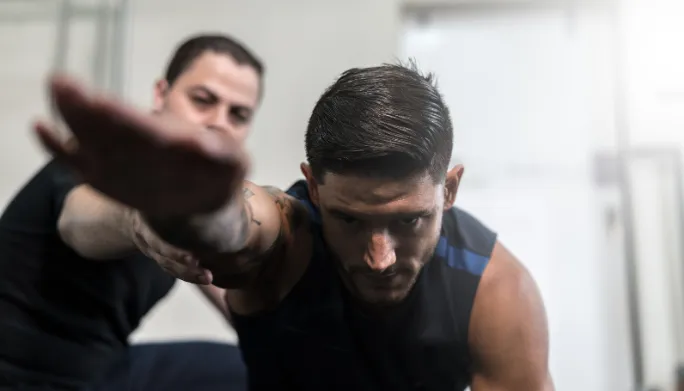Endurance Isn’t Just About Going the Distance
When most people hear “endurance athlete,” they think of someone running marathons or biking 100+ miles. And yeah, that’s part of it—but endurance athletes are way more than just cardio machines. They’re a different breed. Mental grit, physical control, pacing, recovery—it’s all part of the game.
Whether it’s long-distance running, triathlons, cycling, swimming, or even adventure races, being an endurance athlete means building your body and mind to handle prolonged stress without burning out or breaking down. And if you want to train like one—or recover like one—you need the right tools, plan, and support. That’s where Trustrength Performance and Rehab steps in.
Let’s break it all down.
What Makes Someone an Endurance Athlete?
It’s Not Just About Being “In Shape”
Endurance athletes train their bodies to maintain performance over long periods. We’re talking hours of sustained effort. The goal isn’t max power—it’s efficient output. They push aerobic capacity, mental stamina, and muscular endurance to the edge (and sometimes over it).
This could be:
-
A marathoner grinding through mile 22
-
A triathlete keeping form after 90 minutes in the water
-
A cyclist pacing a climb in the final stretch of a long ride
Endurance athletes rely on oxygen-efficient energy systems, lean muscle control, and a crazy level of discipline with recovery and nutrition.
The Science Behind Endurance
Endurance athletes use mainly aerobic energy systems. This means they rely on steady-state oxygen flow to produce energy, unlike sprinters or powerlifters who use quick bursts from anaerobic systems. Over time, this type of training develops:
-
Mitochondrial density (more efficient energy production)
-
Capillary growth (better blood/oxygen delivery)
-
Cardiovascular strength (slower resting heart rate, more efficient oxygen use)
-
Muscle fiber adaptation (more slow-twitch fibers, less fatigue)
Want to train for endurance? You can’t just run long. You need structure, recovery, and injury prevention strategies. Our team at Trustrength helps athletes layer in these key elements to avoid burnout and boost performance.
Different Types of Endurance Athletes
Runners
From 5Ks to ultras. High repetition, joint impact, and lots of lower limb stress. They need mobility, core stability, and strategic strength work to stay injury-free.
Cyclists
Endless hours in the saddle mean neck, lower back, and hip tightness. Endurance cyclists often deal with overuse injuries and postural imbalance.
Swimmers
Shoulders. Shoulders. Shoulders. Endurance swimmers put high stress on the upper body with repetitive overhead movement.
We use soft tissue work and mobility drills to protect their shoulders and improve stroke mechanics.
Triathletes
The ultimate hybrid athlete. They’re juggling three sports and three movement patterns. The key here is balance, structured rest, and solid nutrition planning
Common Challenges Endurance Athletes Face
-
Overtraining – Not just fatigue. It’s hormonal shifts, immune drops, and mental burnout.
-
Injury – Tendonitis, stress fractures, IT band pain, shin splints… the usual suspects.
-
Plateaus – Performance stalls from lack of variation or under-recovery.
-
Poor Recovery – Sleep, hydration, and post-training protocols make or break progress.
We help endurance athletes fix all of the above with custom training, injury prevention, and full-body rehab programs. If you’ve been grinding without gains—or worse, with pain—let’s talk.
Book your assessment at Trustrength
How Endurance Athletes Train
Long, Slow Distance (LSD)
These are the bread-and-butter workouts. They build aerobic base, mental stamina, and teach your body to burn fat efficiently. But too much = overuse. We help you balance LSD with mobility and strength training to keep your joints happy.
Tempo Runs and Threshold Work
This is your “comfortably hard” zone. Great for improving lactate clearance. You feel the burn, but it’s controlled. We track your heart rate zones and design runs or rides that push just the right limit.
VO2 Max and Speed Work
This is the high-end stuff. Short bursts to raise the ceiling of your performance. Helps you finish stronger and recover faster mid-race. But it needs smart programming.
Cross Training
Swimming, yoga, lifting—adding variety reduces burnout and balances muscle activation. Our trainers guide this with purpose, not guesswork
Recovery: Where Gains Actually Happen
Why Recovery Is Non-Negotiable
You don’t get stronger during the workout. You get stronger during recovery. That’s when your muscles rebuild and your nervous system resets.
Our Favorite Recovery Tools at Trustrength
-
Manual Therapy: Loosens tight tissue and speeds up healing
-
Blood Flow Restriction: Builds strength with minimal load—perfect during deload weeks or post-injury
Plus, we teach you how to build recovery days, mobility sessions, and sleep tracking into your program. You won’t find cookie-cutter routines here.
Injury Prevention for Endurance Athletes
We focus on proactive work, not just damage control. Our injury prevention plans include:
-
Functional movement screenings
-
Muscle imbalance assessments
-
Strength + mobility programming
-
Run/cycle/swim gait analysis
All of this is part of what we offer in our Sports Rehab sessions. If you’ve dealt with reoccurring injuries, you already know: prevention is cheaper, faster, and way less frustrating than recovery.
Mindset and Fuel: The Final Edge
Endurance is just as mental as it is physical. Pacing, discipline, nutrition—all of it is about consistency. We coach our athletes on:
-
Performance nutrition
-
Race-week tapering
-
Breathwork and stress management
The goal is to keep your mind and body aligned—so when your legs are dead at mile 20, your brain keeps pushing.
Be Built for the Long Haul
If you’re serious about endurance—whether it’s your first half-marathon or your tenth triathlon—you need a team that gets it. At Trustrength Performance and Rehab, we don’t just treat injuries. We build stronger, smarter athletes who train harder, recover faster, and go longer.
- Want a personalized endurance plan?
- Need to recover from a nagging injury?
- Ready to level up your performance?
Book your free consultation today or stop by our clinic. We’re here to help you train smarter—not harder—and stay in the game for the long run.



